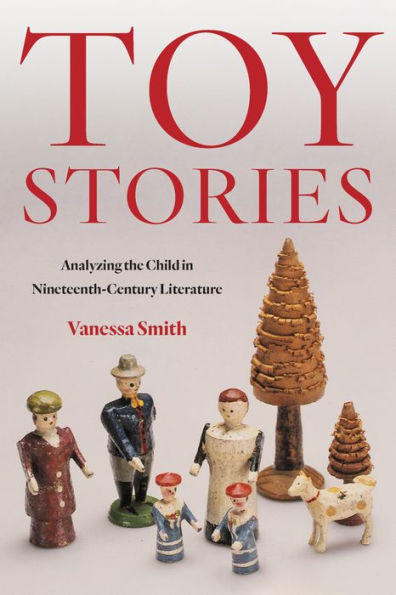Toy Stories: Analyzing the Child in Nineteenth-Century Literature explores the stakes of recurrent depictions of children’s violent, damaging, and tenuously restorative play with objects within a long nineteenth century of fictional and educational writing. As Vanessa Smith shows us, these scenes of aggression and anxiety cannot be squared with the standard picture of domestic childhood across that period. Instead, they seem to attest to the kinds of enactments of infant distress we would normally associate with post-psychoanalytic modernity, creating a ripple effect in the literary texts that nest them: regressing developmental narratives, giving new value to wooden characters, exposing Realism’s solid objects to odd fracture, and troubling distinctions between artificial and authentic interiority. Toy Stories is the first study to take these scenes of anger and overwhelm seriously, challenging received ideas about both the nineteenth century and its literary forms.
Radically re-conceiving nineteenth-century childhood and its literary depiction as anticipating the scenes, theories, and methodologies of early child analysis, Toy Stories proposes a shared literary and psychoanalytic discernment about child’s play that in turn provides a deep context for understanding both the “development” of the novel and the keen British uptake of Melanie Klein’s and Anna Freud’s interventions in child therapy. In doing so, the book provides a necessary reframing of the work of Klein and Freud and their fractious disagreement about the interior life of the child and its object-mediated manifestations.
"1142004310"
Radically re-conceiving nineteenth-century childhood and its literary depiction as anticipating the scenes, theories, and methodologies of early child analysis, Toy Stories proposes a shared literary and psychoanalytic discernment about child’s play that in turn provides a deep context for understanding both the “development” of the novel and the keen British uptake of Melanie Klein’s and Anna Freud’s interventions in child therapy. In doing so, the book provides a necessary reframing of the work of Klein and Freud and their fractious disagreement about the interior life of the child and its object-mediated manifestations.
Toy Stories: Analyzing the Child in Nineteenth-Century Literature
Toy Stories: Analyzing the Child in Nineteenth-Century Literature explores the stakes of recurrent depictions of children’s violent, damaging, and tenuously restorative play with objects within a long nineteenth century of fictional and educational writing. As Vanessa Smith shows us, these scenes of aggression and anxiety cannot be squared with the standard picture of domestic childhood across that period. Instead, they seem to attest to the kinds of enactments of infant distress we would normally associate with post-psychoanalytic modernity, creating a ripple effect in the literary texts that nest them: regressing developmental narratives, giving new value to wooden characters, exposing Realism’s solid objects to odd fracture, and troubling distinctions between artificial and authentic interiority. Toy Stories is the first study to take these scenes of anger and overwhelm seriously, challenging received ideas about both the nineteenth century and its literary forms.
Radically re-conceiving nineteenth-century childhood and its literary depiction as anticipating the scenes, theories, and methodologies of early child analysis, Toy Stories proposes a shared literary and psychoanalytic discernment about child’s play that in turn provides a deep context for understanding both the “development” of the novel and the keen British uptake of Melanie Klein’s and Anna Freud’s interventions in child therapy. In doing so, the book provides a necessary reframing of the work of Klein and Freud and their fractious disagreement about the interior life of the child and its object-mediated manifestations.
Radically re-conceiving nineteenth-century childhood and its literary depiction as anticipating the scenes, theories, and methodologies of early child analysis, Toy Stories proposes a shared literary and psychoanalytic discernment about child’s play that in turn provides a deep context for understanding both the “development” of the novel and the keen British uptake of Melanie Klein’s and Anna Freud’s interventions in child therapy. In doing so, the book provides a necessary reframing of the work of Klein and Freud and their fractious disagreement about the interior life of the child and its object-mediated manifestations.
22.49
In Stock
5
1

Toy Stories: Analyzing the Child in Nineteenth-Century Literature
240
Toy Stories: Analyzing the Child in Nineteenth-Century Literature
240eBook
$22.49
$29.99
Save 25%
Current price is $22.49, Original price is $29.99. You Save 25%.
Related collections and offers
22.49
In Stock

Product Details
| ISBN-13: | 9781531503598 |
|---|---|
| Publisher: | Fordham University Press |
| Publication date: | 09/05/2023 |
| Sold by: | Barnes & Noble |
| Format: | eBook |
| Pages: | 240 |
| File size: | 10 MB |
About the Author
From the B&N Reads Blog
